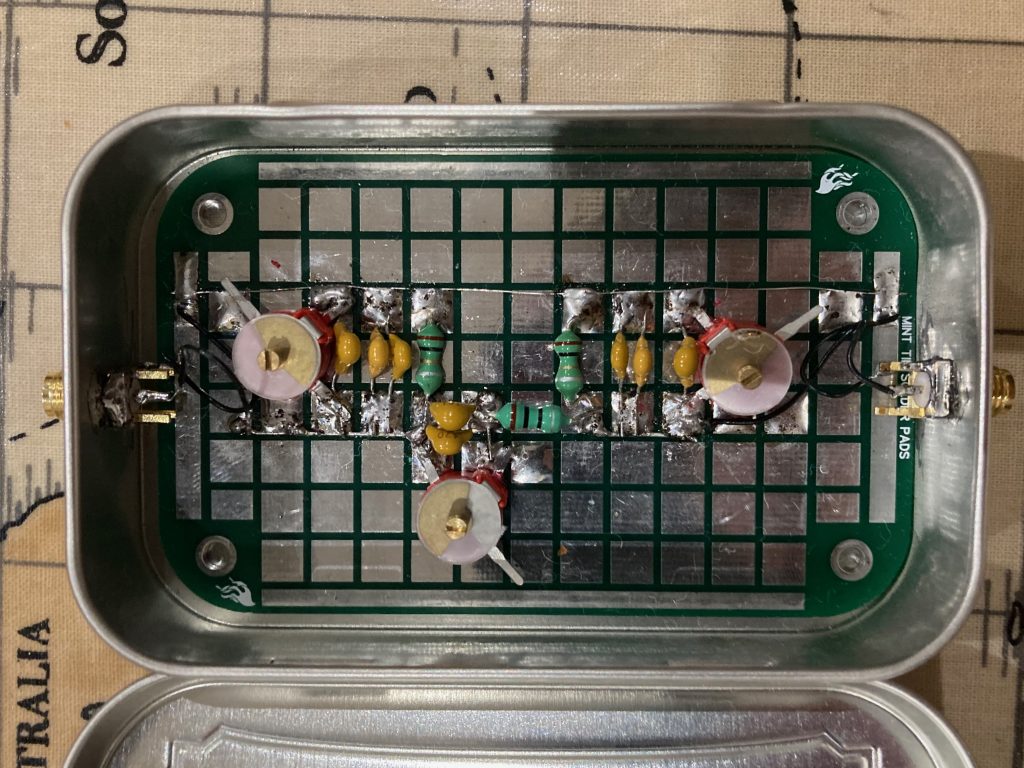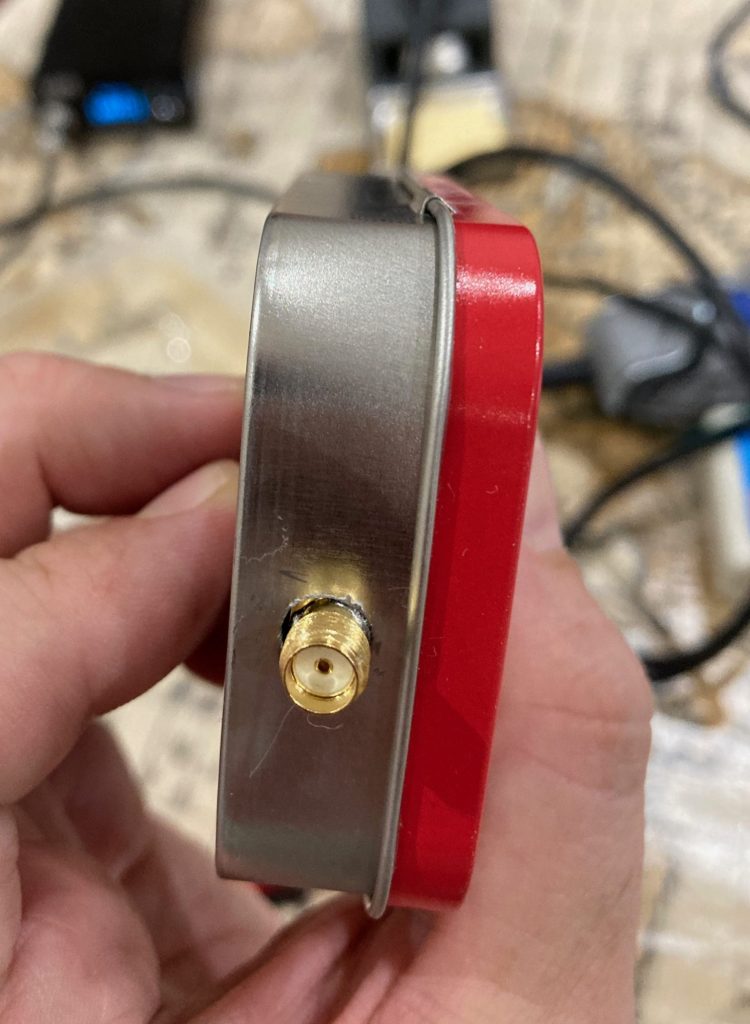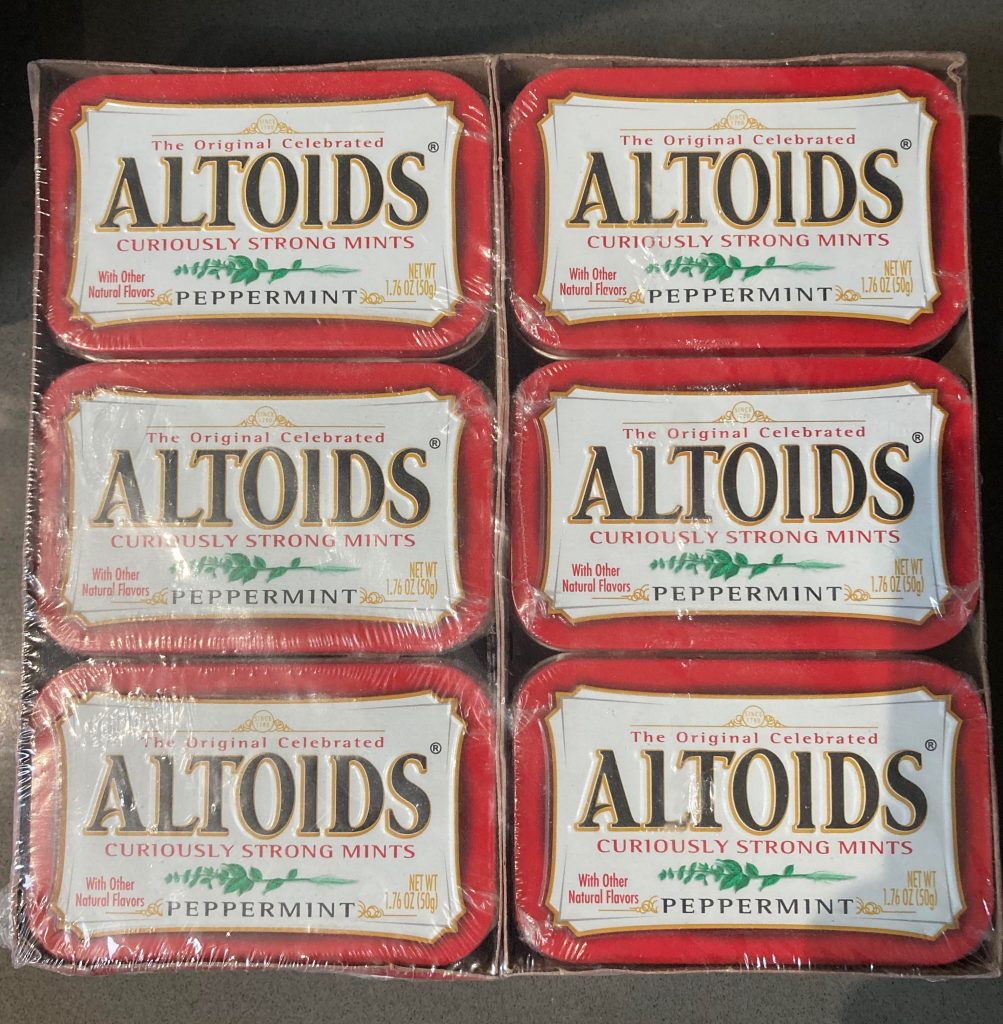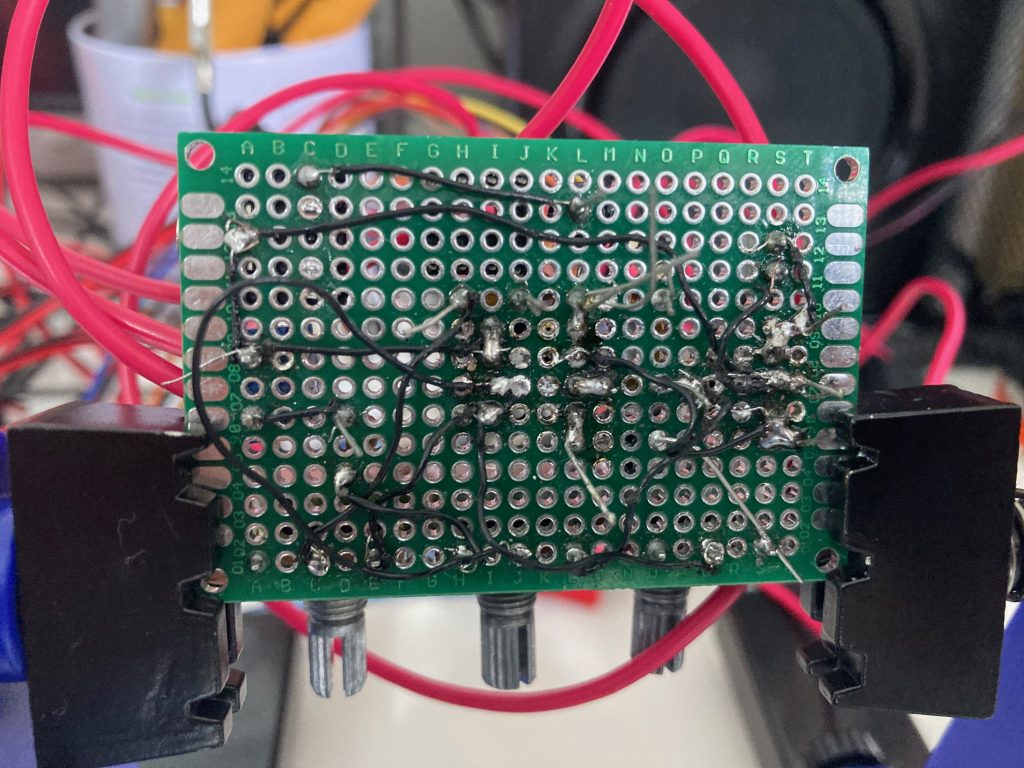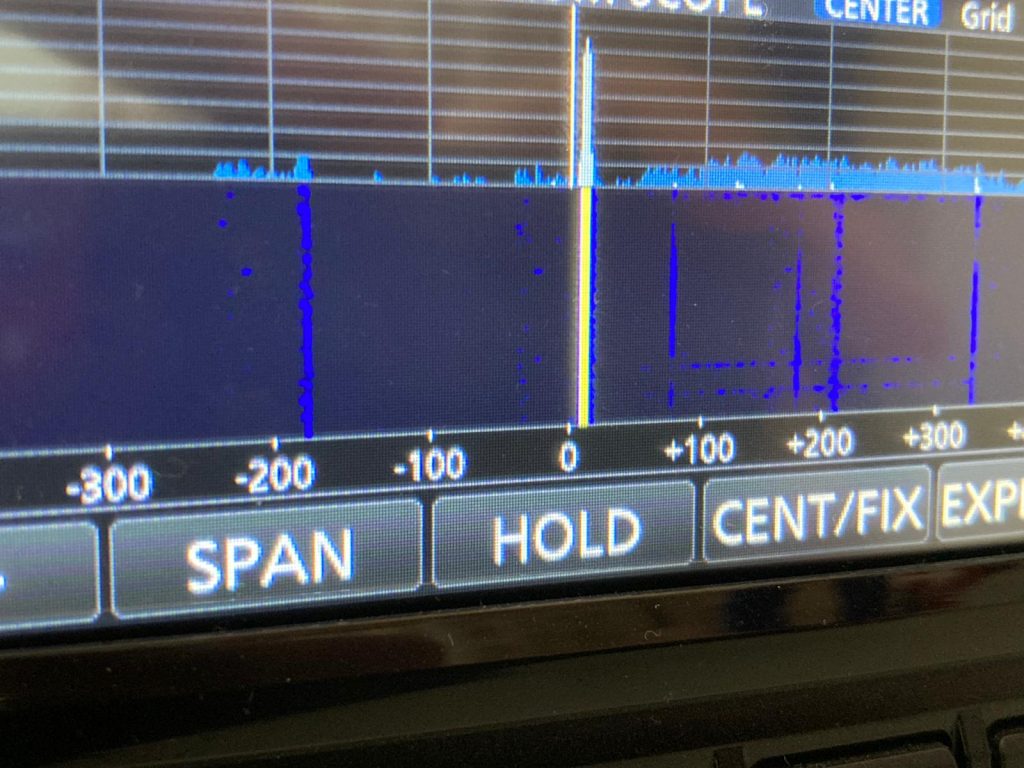I’ve been working on a direct conversion receiver, on and off (mainly off with a couple of spurts) for a few months now based on a talk by ‘Nick the Vic’ M0NTV, and I recently put together the 80m filter. It’s designed to be modular which is quite nice because it does mean that I can dip in and out. I’m going to put together a writeup of what I’ve done, but for now a couple of pictures.
You can see in the first picture that I’m using a ‘mint tin solder pads’ PCB which I purchased from Kanga UK, very convenient for using with my mint tin, I’ve found it great and on the reverse side it has the same but with split pads.
